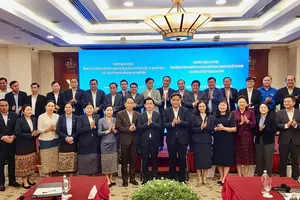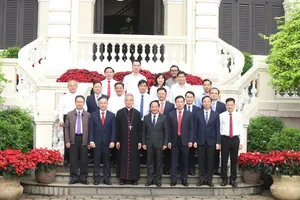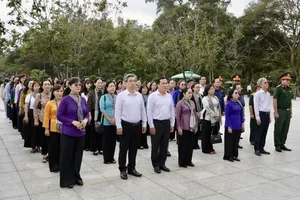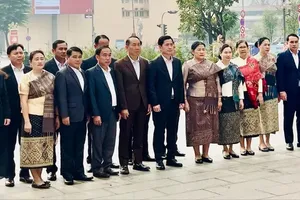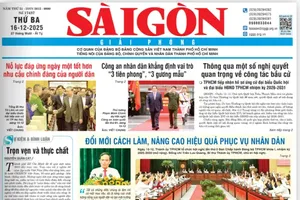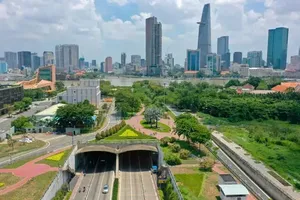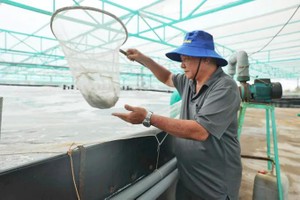 An e-bus runs in streets in HCMC
An e-bus runs in streets in HCMC
The low carbon urban plan in HCMC includes activities, recommendations, and action proposals needed to achieve the city's development goals in the area of low carbon emissions.
Additionally, the southern metropolis also proposed investment programs in priority areas and solutions for policy problems with ministries, central sectors, and organizations.
Furthermore, the city has been calling for capital and technical support from the World Bank and partners to implement the low carbon plan. The low-carbon group is working to align incentives, and approaches that prioritize activities with the highest impact and cost-effectiveness possible.
To implement this activity, from the beginning of 2022, the city has coordinated with the World Bank to establish a Joint Working Group between the city and the World Bank on inclusive and sustainable development. The Joint Working Group has eight technical groups to focus on developing eight component projects, including the Low Carbon Emissions Group.
Studies by the Institute of Environment and Natural Resources under the National University of Ho Chi Minh City have shown that the rapid economic development and rapid urbanization have brought many opportunities and advantages to Ho Chi Minh City in the industrialization and modernization.
However, these factors also bring many challenges in terms of environment and social security, in which it is noteworthy that the issue of greenhouse gas emissions is increasing sharply, which seriously affects the quality of air and people's health.
The study showed that HCMC's total greenhouse gas emissions in 2019 were over 58 million tons of CO2 including more than 17.6 million tons of CO2 produced from industrial activities. The industries with high emissions are chemical with 63 percent, textile with 16.1 percent, and metal production with 14.7 percent. Road transport activities emit more than 13.4 million tons of CO2, motorcycles alone are the largest emission vehicles - accounting for nearly 63 percent.
Mr. Nguyen Tin Huy, Director of the Business Office for Sustainable Development (under the Vietnam Confederation of Trade and Industry - VCCI), cited a report by the Japan International Development Agency showing that the level of Ho Chi Minh City's electricity consumption by 2030 is estimated at 14 billion kWh, equivalent to an emission level of nearly 12 million tons of CO2.
This is considered one of the main causes of the greenhouse effect and climate change, which has been affecting many aspects of life and the economic development of Ho Chi Minh City.
Estimates by international environmental organizations show that every year, more than 20 million people around the world lose their homes and livelihoods due to the effects of climate change. Therefore, many countries began to consider the calculation of emissions. According to Mr. Nguyen Tin Huy, currently, climate change is the most urgent and serious issue. Therefore, solutions to reduce greenhouse gas emissions need to be implemented much more.
According to Vice Chairman of Ho Chi Minh City People's Committee Vo Van Hoan, there are 140 large establishments in the fields of energy, construction, industry, and trade that need to carry out an inventory of greenhouse gases according to Decision 01/2022.
Over the past time, the Department of Natural Resources and Environment has prepared steps to join with other departments, agencies, and local administrations in districts to guide establishments and businesses to carry out the steps of inventorying, reporting, and developing emission reduction plans as per the request of the Government.
Some experts who gave opinions on solutions for the city to effectively implement the goal of reducing greenhouse gas emissions said that the most important thing is that the departments, agencies, and sectors in the city must participate synchronously.
Associate Professor Nguyen Hong Quan, Director of the Institute for Research and Development of Circular Economy under Vietnam National University HCMC, analyzed that in order to deploy effective solutions, it is necessary to have a comprehensive connection between individuals and units to create a chain of circular - cyclic links that brings multi-values.
He took an example. The city has invested in developing metro lines, however, to encourage people to participate in this means of transport, it requires the synchronous participation of departments and agencies. Accordingly, the Department of Transport ought to have solutions to develop other means of connection so that it is most convenient, have solutions to propagate and encourage people not to use personal vehicles but public means of transportation. The Department of Planning and Architecture also needs to plan small routes to connect all reasonably.
According to Associate Professor Phung Chi Sy, Vietnam Association for the Protection of Nature and Environment, with the regulations of the Ministry of Natural Resources and Environment, Ho Chi Minh City should carry out periodic inspection and cut greenhouse gas emissions in five areas including industrial production, transportation, energy, agricultural activities, and waste treatment.
In order to reduce greenhouse gases towards low-carbon urban development, the city needs specific solutions in each area, it is necessary to develop a master plan with the synchronous participation of all organizations. For example, in the field of industrial production, it is necessary to apply and deploy solutions for cleaner production, green production to save raw materials, electricity, and water and promote waste recycling.
For the energy sector, it is necessary to switch to clean and renewable energy sources. In the field of transportation, it is necessary to step up the control of vehicle emissions and develop electric vehicles. In agriculture, farmers should limit their use of fertilizers and pesticides but promote recycling of waste and by-products in agricultural production as organic fertilizer.
For urban waste treatment, it is necessary to invest in advanced and modern technologies to proceed to burn waste to generate electricity. However, the city should determine which areas emit the most, then focus resources to implement first, otherwise spreading will not be effective.
According to the leader of Ho Chi Minh City Department of Natural Resources and Environment, in the action plan to respond to climate change for the period 2021-2030, with a vision toward 2050, the city has set a target to reduce greenhouse gas emissions by 10 percent by 2030. It is expected that this number will increase to 30 percent if there is support from the international community.
To realize this goal, the city has also been cooperating with C40 cities - a network of mayors of nearly 100 world-leading cities, collaborating to deliver the urgent action needed right now to confront the climate crisis and JICA (Japan International Cooperation Agency) to carry out activities for the reduction of greenhouse gas emissions.
By Minh Hai – Translated by Anh Quan
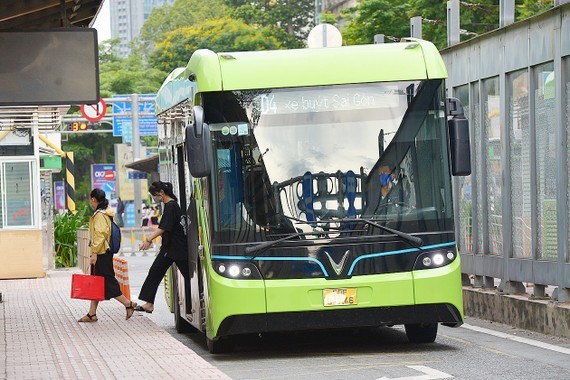 An e-bus runs in streets in HCMC
An e-bus runs in streets in HCMC
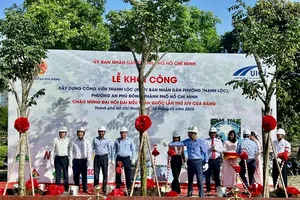
 An e-bus runs in streets in HCMC
An e-bus runs in streets in HCMC


)
